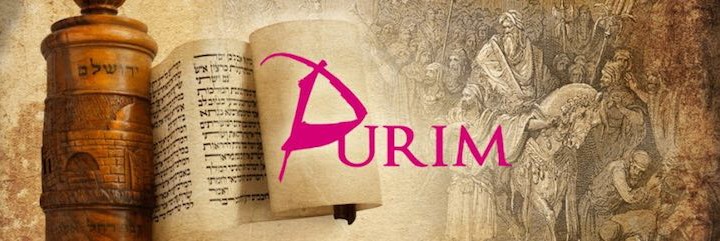Maybe you are familiar with Purim or perhaps you are not, but Purim comes from the story in the book of Esther. There’s a fascinating sequence of events that I think connects to the work of the cross, which I will expound on in part two. But for now, let’s learn a few things about the book and story of Esther.
The book of Esther is said to be the one book in the Bible that does not mention God. That’s not entirely accurate. The Septuagint (or LXX) is the Greek translation of the Hebrew Scriptures. Esther 2:20 in the LXX clearly mentions God. Esther 2:20 (ESV) “Esther had not made known her kindred or her people, as Mordecai had commanded her, for Esther obeyed Mordecai just as when she was brought up by him.” Esther 2:20 (LXX) “And Esther had not revealed her country, for Mordecai had commanded her to fear God and to keep his commandments, as when she was with him, and Esther did not change her way of life.” That may be the only difference with a mention of God in comparing modern translations with the LXX, but there’s more to the LXX.
The Septuagint includes six additions to the book of Esther, labeled A through F. They include an opening in which Mordecai has a dream where God warns him about the coming war upon the Jews. The letter that Haman sent out to the provinces about killing the Jews is also included. Addition C tells of Mordecai’s prayer and Esther’s prayer during the time of fasting. In chapter 5, we see the king accept Esther into the throne room and ask for her petition. Addition D tells of a more dramatic entrance of Esther and two attendants as they approach the king. The next addition is a copy of the letter Esther sent to the providences. The final addition is the interpretation of Mordecai’s dream showing that God had provided for His people. Of the six additions, four of them mention God.
From a historical point of view, King Ahasuerus (or Xerxes) is a king of the Meads and the Persians. But let’s go back to the Assyrians. (And this is going to be a simplified telling.)
Assyria and Babylon shared kings at times and were separate kingdoms at other times. Assyria was in the north and Babylon was in the south. The Northern Kingdom of Israel was taken and scattered by the Assyrians in 721 BC. Sometime after this, Media revolted and split from Assyria. Babylon and Assyria rejoined and under Nebuchadnezzar, took Judah into Exile beginning in 606 BC through 588 BC. Cyrus the Great came from Media (around modern-day Iran) and joined the Babylonian Empire with Asia Minor to make the Persian Empire. The Jews were in exile for 70 years until Cyrus ended their exile in 536 BC and sent Zerubbabel, and later Ezra, to rebuild the Temple in Jerusalem. Thousands of Jews went with them, but many stayed behind.

From the books of Ezra and Nehemiah, we know of the kings Cyrus, Darius I, and Artaxerxes. The order of kings of the Persian Empire is Cyrus, Cambyses, Darius I, Xerxes I, Artaxerxes I, Xerxes II, and more. Ezra does not mention Cambyses by name, but work on the Temple stopped under his reign as is mentioned in Ezra 4:24. Xerxes I isn’t mentioned by either Ezra or Nehemiah, but Xerxes I is King Ahasuerus that marries Esther. For timeline reference, Zerubbabel and Ezra are sent by Cyrus to rebuild the Temple. Cambyses stops work on the Temple and Darius I allows it to resume. Ezra returns to Persia to continue to serve Darius. Years later Artaxerxes sends Ezra and Nehemiah to Jerusalem where Nehemiah rebuilds the city walls. Xerxes I is king prior to this, which means that Esther became queen after the Temple was rebuilt and before Nehemiah rebuilds the walls.

King Ahasuerus (Xerxes I) came to the throne in 485 BC. It was in the third year of his reign when he held a banquet and party where he invited Queen Vashti to show off her beauty to all in attendance. She refused and that is what started the story of Esther. Queen Vashti was banished from the king’s presence and the search was on to fill the king’s harem from where he could find a new wife. Chapter 2 tells us that it took 12 months to prepare the girls before they could be called in to see the king. This is what it says in verse 12 (LXX), “Now this was the appointed time for a girl to go in to the king, when she had completed twelve months thusly: for the days of treatment comprised six months of being anointed in oil made from myrrh and six months with aromatic spices and women’s cosmetics.”
There is no knowing how many girls went in to the king before Esther, but at least another year had passed since Vashti was banished. This means that Esther would have become queen sometime in the fourth year of the reign of Xerxes I, which would have been in 481 BC. Nehemiah was serving King Artaxerxes I in the 20th year of his reign when he was sent to Jerusalem to rebuild the walls. That would have been around 444 BC. The events in Esther took place some 37 years before Nehemiah.
In part two, we’ll learn of the treachery of Haman and the decrees that the king gave to both Haman and Esther and how those relate to the cross. Esther is only 10 chapters long, or 16 if you read the Septuagint. Feel free to read it before the next installment.

